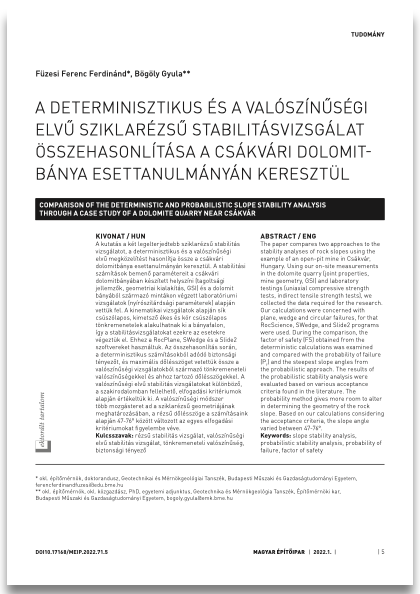COMPARISON OF THE DETERMINISTIC AND PROBABILISTIC SLOPE STABILITY ANALYSIS THROUGH A CASE STUDY OF A DOLOMITE QUARRY NEAR CSÁKVÁR
DOI:
https://doi.org/10.17168/Keywords:
slope stability analysis, probabilistic stability analysis, probability of failure, factor of safetyAbstract
The paper compares two approaches to the stability analyses of rock slopes using the example of an open-pit mine in Csákvár, Hungary. Using our on-site measurements in the dolomite quarry (joint properties, mine geometry, GSI) and laboratory testings (uniaxial compressive strength tests, indirect tensile strength tests), we collected the data required for the research. Our calculations were concerned with plane, wedge and circular failures, for that RocScience, SWedge, and Slide2 programs were used. During the comparison, the factor of safety (FS) obtained from the deterministic calculations was examined and compared with the probability of failure (Pf) and the steepest slope angles from the probabilistic approach. The results of the probabilistic stability analysis were evaluated based on various acceptance criteria found in the literature. The probability method gives more room to alter in determining the geometry of the rock slope. Based on our calculations considering the acceptance criteria, the slope angle varied between 47-76°.


